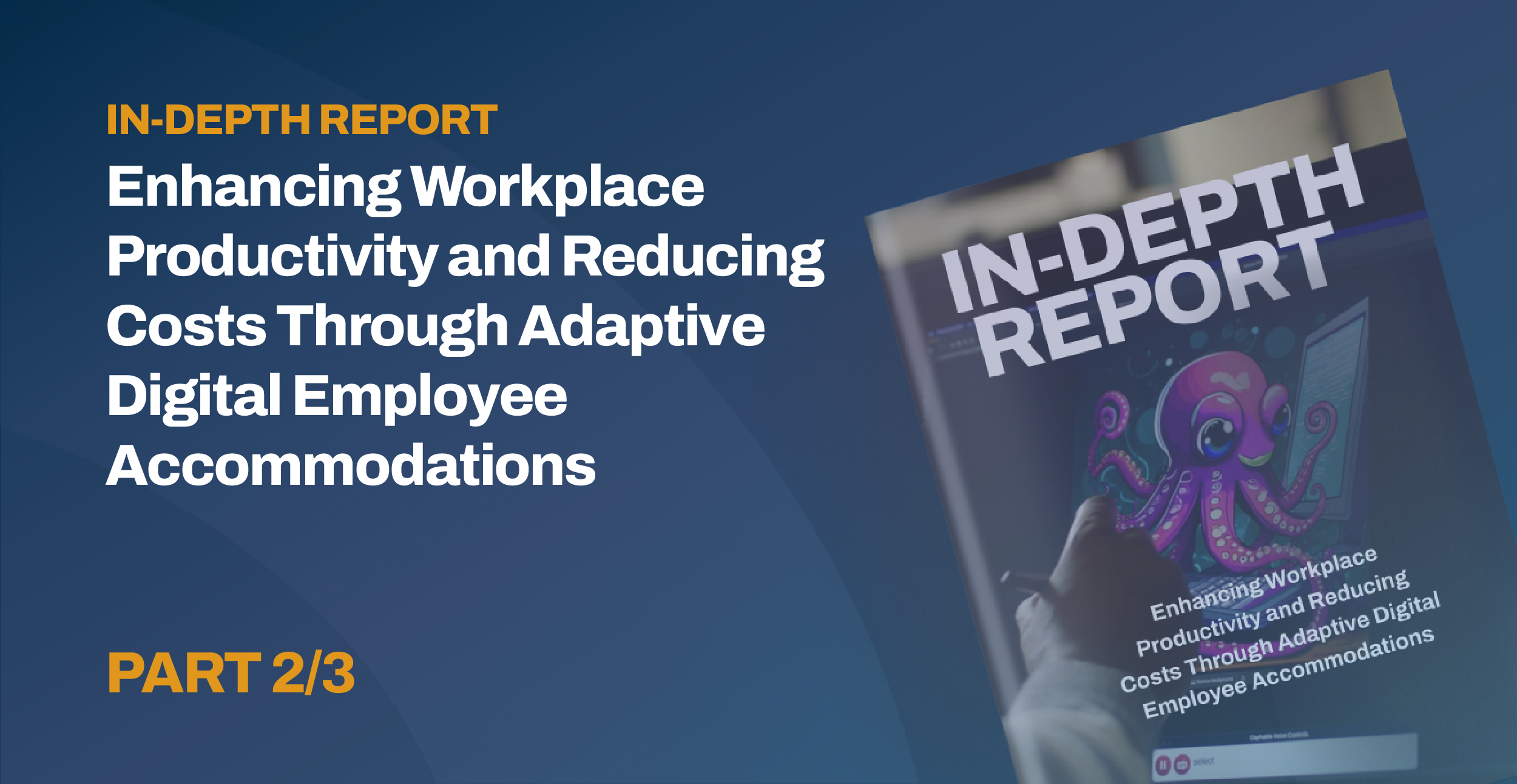4. Case Studies
Case 1
Situation:
A large financial services firm, identified that a portion of their employees with visual impairments were struggling to access digital content on their computers. These employees relied on outdated assistive technologies that were not compatible with the company’s newer software systems. This incompatibility resulted in decreased productivity and frustration among the affected employees.
Action:
To address this issue, Company A invested in modern screen readers like JAWS and alternative input devices such as ergonomic keyboards and braille displays. They also provided training sessions to ensure that the employees were comfortable and proficient in using these new tools.
Outcome:
After the implementation, the productivity of the employees with visual impairments increased by 20%. The improved accessibility tools allowed them to navigate complex financial software more efficiently, reducing errors and increasing their work speed. Additionally, employee satisfaction surveys indicated a 15% improvement in job satisfaction among these employees, leading to a significant reduction in turnover within this group.
Case 2
Situation:
A large technology firm employed hundreds of individuals with motor disabilities who found it challenging to type for extended periods due to their condition. This limitation slowed down their work and led to increased absenteeism due to physical strain and discomfort.
Action:
To alleviate these issues, the firm integrated Cephable, an alternative inputs software, into the employees’ workstations. The software allowed the employees to control their computers and dictate documents using voice, head motion and facial expressions, significantly reducing the need for manual typing.
Outcome:
Following the integration of the alternative inputs software, absenteeism among these employees decreased by 25%. The employees reported that they could now complete their tasks more comfortably and efficiently, leading to a 10% decrease in operational costs related to workflow delays and sick leave. The overall productivity of the affected employees improved, and their engagement levels increased as they felt more supported by the company’s efforts to accommodate their needs.
5. Overcoming Challenges
While the benefits of adaptive digital accommodations are clear, implementing them can come with challenges. One common obstacle is budget constraints. However, a thorough cost-benefit analysis can help justify the initial investment by highlighting long-term savings and productivity gains. Companies can also explore government grants and tax incentives for investing in accessibility technologies, which can help offset costs.
Resistance to change is another potential challenge. Securing leadership buy-in is crucial to overcoming this resistance. By presenting data-driven evidence of the benefits of accessibility, companies can gain the support of top management. Implementing structured change management strategies can also make it easier to adopt new technologies and ensure a smooth transition.
Technical integration issues may arise when introducing new technologies into existing systems. To address this, companies should conduct compatibility checks and select scalable solutions that can grow with the organization. Partnering with IT professionals or accessibility consultants can also help navigate these challenges and ensure a seamless integration process.
6. Conclusion
Investing in adaptive digital employee accommodations is a strategic decision that offers significant benefits. It helps companies comply with legal requirements, boosts productivity, reduces costs, and fosters a more inclusive and innovative workplace. By following the steps outlined in this report, businesses can effectively implement these technologies and unlock the full potential of their workforce, ultimately gaining a competitive edge in their industry.
7. Recommendations
To maximize the benefits of adaptive digital accommodations, companies should start small by implementing pilot programs and scaling up based on success metrics. Continuous learning is also essential—businesses should stay updated on emerging technologies and best practices in accessibility. Finally, engaging with experts, such as accessibility consultants, can provide valuable insights and ensure the success of the implementation process.

